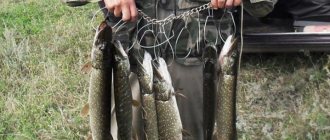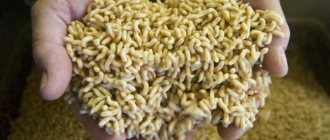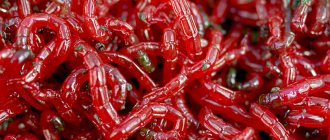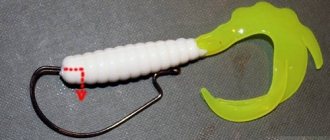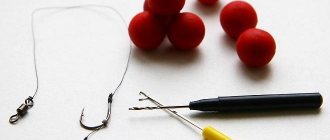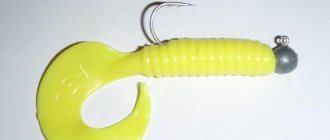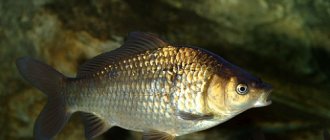Fishing is a pleasant pastime for many outdoor enthusiasts. And if for some fishing is a favorite pastime, for others it is a way of earning money. At the same time, you do not need to have any special training in order to fish. All you need to catch fish is good fishing gear. And today we will talk about gear with which the fisherman manages to store caught fish for a long time, and also conveniently transport it.
What is kukan
To be fair, I would like to note that the most popular equipment for storing caught fish is cages. At the same time, the cage is not convenient in some situations, for example, when fishing from a boat. Also, if your goal is a huge trophy specimen, then the cage will not be suitable, because it simply will not fit in it. It is in such cases that the best tackle option for placing fish is a kukan.
Kukan is a simple design, thanks to which the caught fish remains alive for a long time. After all, sometimes anglers can be fishing for quite a long time, and it will be important to keep the catch fresh for as long as possible. The procedure for placing the catch on the kukan is simple. To begin with, the caught fish is removed from the hook. After this, a small hole is made in the soft tissues of the fish’s mouth with a knife and a hook or loop is inserted into it (depending on what kind of fish is used), then it is closed and lowered into the water. You can also find fishermen who hook fish onto a kukan by threading a hook through the gills. This method has a right to exist, but the fish does not remain alive for long.
Which fish kukan to choose
Date: May 10, 2021 | 789
After catching a fish, several scenarios are possible. Some people totally profess the “catch and release” principle, while others selectively release fish. If you want to take the fish you catch and cook it, then you need to somehow preserve it. So, to preserve fish, various methods and devices are used. You can simply wrap the fish in a bag and put it in your backpack, which is not very good, especially for long fishing trips in hot weather. You can put the fish in a special basket, topped with grass; You can put the catch in a cage, or on a kukan. When catching predatory fish that have a powerful, strong bony mouth, the kukan is the most justified. Let's talk about the design of the kukan and aspects of its application in more detail. You need to know this in order to choose a suitable reliable cucan and use it correctly.
Kukans can be classified according to a number of parameters:
- Material;
- Fastener design;
- Number of fasteners;
- Rope length.
Of course, a reliable cucan must be made of steel! These include steel fasteners and steel cable. Plastic kukans are extremely unreliable and can only be used when catching obviously small fish (for example, perch in competitions). So, it would not be advisable to put a pike weighing a kilogram or more on such a hook - it might break the fastener and escape.
There are many design options for kukan fasteners. Many of them are good and it’s quite difficult to single out just one. It is important that the clasp is secure! If fishing takes place from an inflatable boat, then it is necessary that the kukan does not have sharp wire ends, so as not to pierce the side of the craft.
It’s good if the design of the kukan fasteners allows you to put fish on them with one hand.
The fasteners of the kukan must certainly be attached to the cable through large, reliable swivels, because the fish can spin on the hook and damage it if the fasteners cannot rotate relative to the cable.
The number of fasteners can be different, usually there are 5-7 pieces, there are kukans with a large number of fasteners.
The length of the cable is selected based on the conditions. If you fish from a boat, then 1-1.5m is enough. If you fish from the shore, you can use a longer kukan - up to 2.5-3m.
The kukan cable has a loop at the end so that it can be attached to a boat or near the shore.
Naturally, the components of the kukan must be made of stainless steel, or have reliable anti-corrosion coatings. This will increase the durability of the kukan, because... he will often be in the water.
So, based on the information described above, you can already determine which kukan with what characteristics will suit you. Buy this one.
Share with your friends:
Categories: Equipment · Tags: Kukan, Equipment, Catch
What does kukan consist of?
In general, different types of kukan are similar in structure. Standard tackle consists of the following parts:
- Soft-sheathed metal cable, synthetic cord, metal chain (the choice depends on the angler). It is the basis of the kukan; all other parts of the tackle are placed on it. The cable or cord can be of different lengths. When choosing, you should be guided by how much fish you plan to store on the kukan. As for strength, you need to take into account the weight of the caught fish. Typically, cables with a diameter of 0.3 mm and above are used. It is also important how soft and flexible the cable is, this is necessary for the convenience of transporting fish.
- Carabiners of different sizes. Also a very important element of gear. Loops or hooks are placed on them, on which the fish are directly stored. In addition, two large carabiners are used at the edges of the main cord or cable. This is done in order to hook the kukan to any convenient place for the fisherman (this could be the edge of a boat, a driven stake on the shore, a thin tree, etc.). Very often, when buying a kukan, fishermen do not pay attention to the quality of the carabiners, so be vigilant and purchase reliable carabiners made of high-strength steel.
- Swivels. They are the connecting link between the carabiners and the main cable.
- Hooks (wire loops). The fish are put on them, and such hooks have a special closing system so that the fish sits steadily and does not fall off.
- Inserts. Most often, tubes are used in the form of inserts. They serve to ensure that carabiners and hooks do not get confused with each other. They can be metal, plastic or rubber.
Many fishermen resort to creating kukans with their own hands. After all, in essence there is nothing complicated in its design. At the same time, you can save a lot. And very often it happens that there is simply no specialized fishing store nearby, so there is only one way out - to make kukan yourself.
What parts are needed to create a kukan with your own hands?
If you decide to make the kukan yourself, you will need the following parts:
- cable (needs about 5-6 meters), it should be cut into pieces. The large one (2 meters) will serve as the basis of the kukan, and the rest of the cable is cut into equal parts that will be needed to create loops;
- carabiners (large and small), 2 large ones will be at the edges of the cable, and small ones are used as holders for loops on which the caught fish will be put on;
- swivels, their number is equal to the number of loops;
- tubes that serve as limiters between the carabiners (to prevent the tackle from getting tangled);
- clamps (aluminum) that will be needed to create loops;
- hooks (made from bicycle spokes), used as an alternative to metal loops, due to their reliability and rigidity they have proven themselves very well among fishermen;
Do-it-yourself pike kukan (video)
It can be easily made using available materials. The main thing is to select the necessary parts with certain characteristics that will correspond to the size of the dowel, the thickness of the cable and the model of carabiners. For self-production you will need the following elements:
- Metal cable with a diameter of 2 or 3 mm.
- Silicone or rubber tube with a diameter of more than 3 mm.
- Cable clamps. Instead, you can also use thick braid or steel wire.
- Large carabiners for attaching to the shore or boat, 2 pcs.
- Swivels.
- Bicycle spokes or umbrella spokes.
It is necessary to connect all the listed parts into a single structure. To do this, take a cable, and swivels and tubes are strung on it in order. Large carabiners are attached to the two ends of the cable, then fasteners made from knitting needles are put on the swivels. Ready.
You can learn more about making kukan with your own hands from the following video:
A well-made kukan, purchased in a store or assembled yourself, will serve you for many years. It will keep the caught fish alive for a long time, which is very important on “long” fishing trips or in the heat of summer. Today this is an indispensable attribute when fishing from a boat with a spinning rod, which many anglers have already appreciated.
Views: 1,393
Recommendations for the use of kukan
Using a homemade kukan is very simple, but not all fishermen know what to do in order not only to keep the fish, but also to extend its life. If the fisherman does not perform all actions carefully, the caught individual will be injured and will quickly die as a result.
Following these recommendations will help you avoid this:
- If the pike has swallowed the hook very deeply, it is unlikely to be pulled out. It would be much more reasonable to put the fish on the kukan together with a double, and the injury will not be so severe. If all actions are done correctly and carefully, the pike will be able to live in the water for about 4 hours.
- A fish placed on a kukan will be quite active and mobile for several hours. If during fishing several large individuals are caught at once, it is not recommended to put them all on the tackle and carry them with you in the boat. There is a high probability that the fish will make a lot of noise and scare away other river inhabitants. The most reasonable option is to attach the kukan with the catch away from the fishing spot.
- Regardless of what kind of fish is caught, you need to put it on the kukan carefully (this is especially true for pike). Most predators have not only teeth in their mouths, but also spines and thorns located on the upper palate. If not acted wisely, the fish may bite the fisherman severely. That is why it is recommended to purchase special gloves in advance that provide reliable protection against such damage.
Making a kukan with your own hands is not at all difficult, if a person knows how to handle tools, it will take no more than an hour. But in any case, regardless of whether the product is purchased or made with one’s own hands, the kukan should be in the arsenal of every fisherman, because carrying several large fish with you in a boat at once is extremely inconvenient.
Kukan design
Kukan consists of a minimum number of components. A cable or strong rope is used. A certain number of carabiners are attached to it, on which the fish is attached. The pike cooker has the following design:
- Rope, flexible wire, cable. Length up to four meters. Determined by fishing conditions, number of carbines and personal preferences.
- Carabiner for securing a predator.
- A mechanism for attaching a kukan to a boat or on the shore. Maybe a regular hinge or a special latch.
- Special inserts. Placed between carabiners to prevent them from getting tangled.
Experienced fishermen who know very well what kukan is can assemble it with their own hands. In this case, an additional weight is used, fixing it at the end of the structure. This kind of detail is especially useful when fishing from a boat, as it provides optimal orientation in a body of water.
Advantages and disadvantages of kukans for fish
Kukan has a number of advantages for the fisherman:
- Compact, when folded, the kukan can easily be placed in the pocket of a fishing bag or even a jacket pocket
- Fish kept alive on a kukan much longer than in a mesh or metal cage
- Fish on a kukan are less damaged; in a cage, fish hit the walls and are often injured
- When fishing from a boat, the kukan, which is in the water with the fish, does not slow down the movement of the boat, unlike a mesh or metal cage
- Low cost
- The opportunity to make kukan with your own hands
The only drawback of the kukan can be considered the inconvenience of using it if fishing involves constant movement across a body of water, in which case it has to be constantly taken out of the water and moved to a new place.
